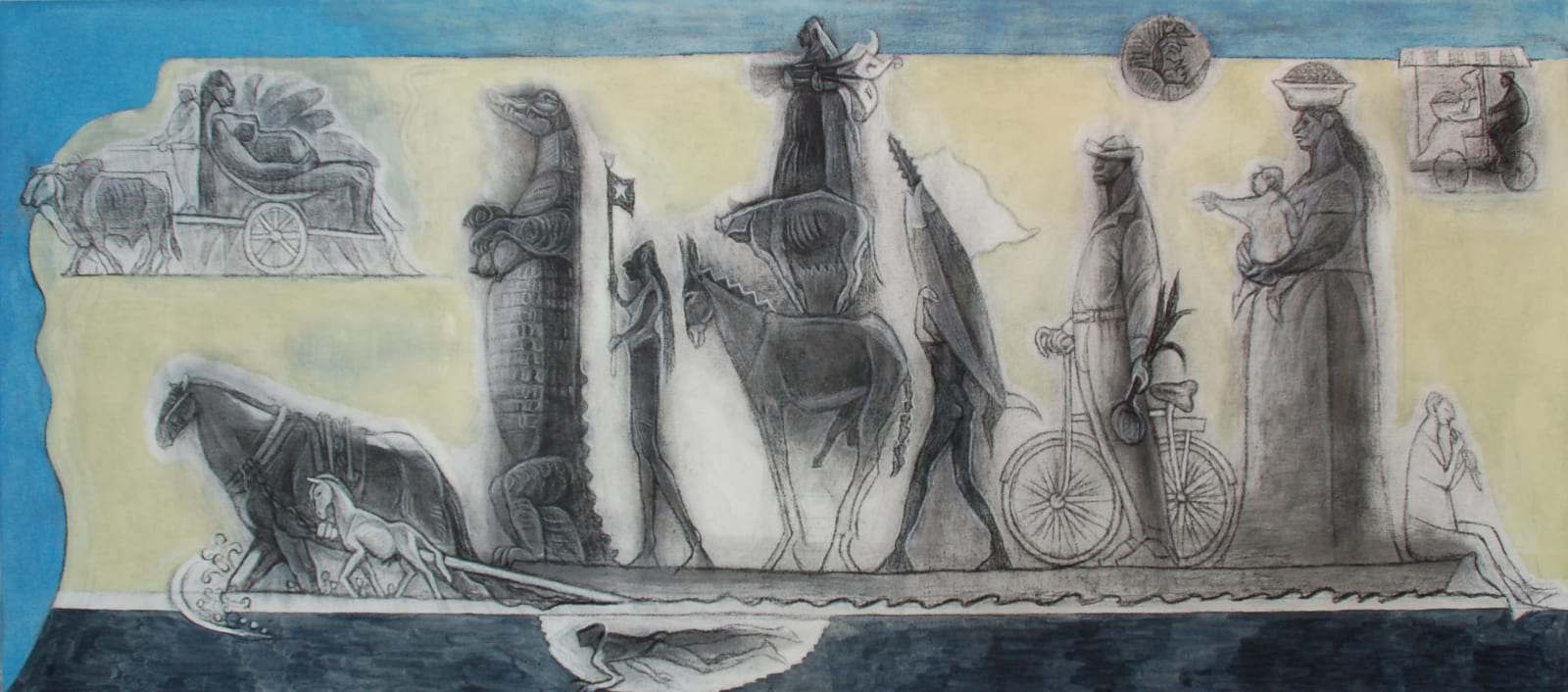
Shinzaburo Takeda Japanese, b. 1935
Rio Ostuta III, 2011
Oil and charcoal on canvas
23.75 x 53.5"
Inspired by rural life in Oaxaca, Takeda is fascinated by not only the landscape, towns, and animals, but mostly the daily life of indigenous people. Whether they are celebrating local...
Inspired by rural life in Oaxaca, Takeda is fascinated by not only the landscape, towns, and animals, but mostly the daily life of indigenous people. Whether they are celebrating local festivals, walking to the market, or crossing the river, his figures are always subject to his style of magic realism, which suspends the laws of nature to create dreamlike visions of a world where anything can happen. Figures float in the air, crocodiles walk upright, and somehow, Takeda convinces the viewer that all of this is possible in some hidden village, deep in the jungles, which only he can find.
Magic realism combines real-world narratives with magical and fantastical elements as seen in Takeda's work. The artist found in his adopted land of Oaxaca, where he emigrated in 1978, one of the most biologically diverse states in Mexico, ranking in the top three, along with Chiapas and Veracruz for numbers of reptiles, amphibians, mammals, and plants. The title of the painting comes from the name of the Ostuta river which is located in the Isthmus of Tehuantepec, Oaxaca.
Magic realism combines real-world narratives with magical and fantastical elements as seen in Takeda's work. The artist found in his adopted land of Oaxaca, where he emigrated in 1978, one of the most biologically diverse states in Mexico, ranking in the top three, along with Chiapas and Veracruz for numbers of reptiles, amphibians, mammals, and plants. The title of the painting comes from the name of the Ostuta river which is located in the Isthmus of Tehuantepec, Oaxaca.
